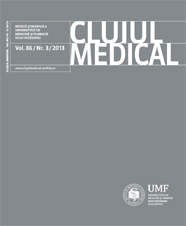Ways To Prevent Infection After Open Fracture Of The Lower Limb
Keywords:
open fracture, infection, primary closure of the skin, antibioticsAbstract
Background and aims. Despite the great effectiveness of antibiotics, no principle is more important in the care of open fractures than aggressive irrigation and debridement. Fixation of open fractures has a number of beneficial effects, including
even the reduction of the risk of infection.
Materials and Methods. This prospective study of the treatment of 116 open fractures of the lower limb offered us the possibility to determine the ways to prevent the infection. All the patients were studied prospectively and the type of treatment and the rate of infection were evaluated.
Results. In the course of the treatment, 96 wounds were closed by primary closure (82.8%) and 2 wounds were closed by secondary closure on the 5th postoperative day (1.7%). There were 14 skin grafts (12.1%), 2 muscle flap closures (1.7%) and 2 healings by granulation (1.7%). The antibiotics used were ceftriaxone + gentamycin for type I, II fractures; metronidazole was added for type III fractures. The duration of the antibiotic therapy was 7-10 days, according to the severity of the fracture. The infection rate was 0% for type I, 0% for type II and 5.17% for type III fractures (6/116).
Conclusions. The treatment of open fractures by intensive debridement of the wound and immediate fixation, as well as by primary closure of the wound with prolonged use of antibiotics, led to a dramatic decrease of the rate of infections
Downloads
Published
How to Cite
Issue
Section
License
The authors are required to transfer the copyright of the published paper to the journal. This is done by agreeing to sign the Copyright Assignment Form. Whenever the case, authors are also required to send permissions to reproduce material (such as illustrations) from the copyright holder.

The papers published in the journal are licensed under a Creative Commons Attribution-NonCommercial-NoDerivatives 4.0 International License.

